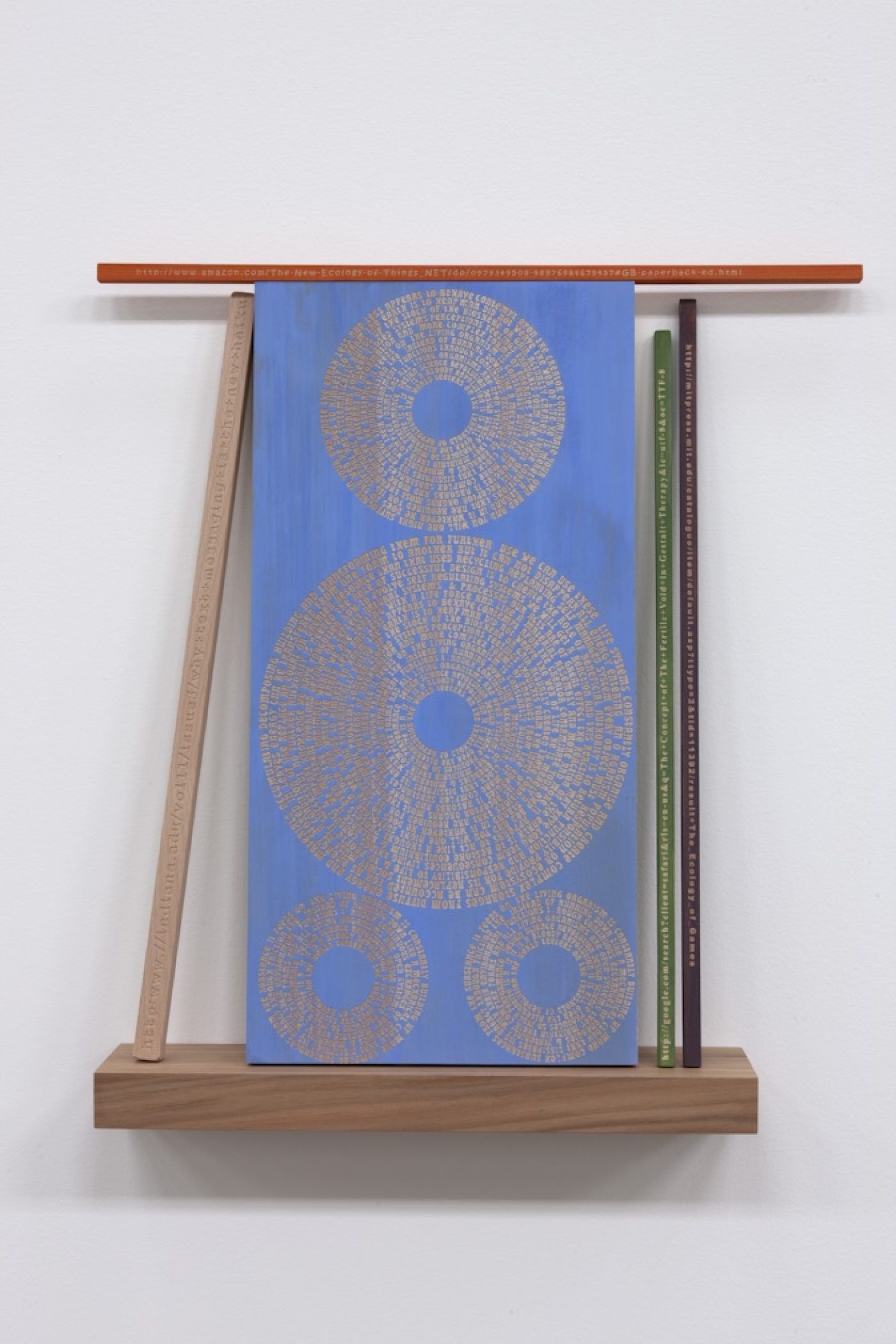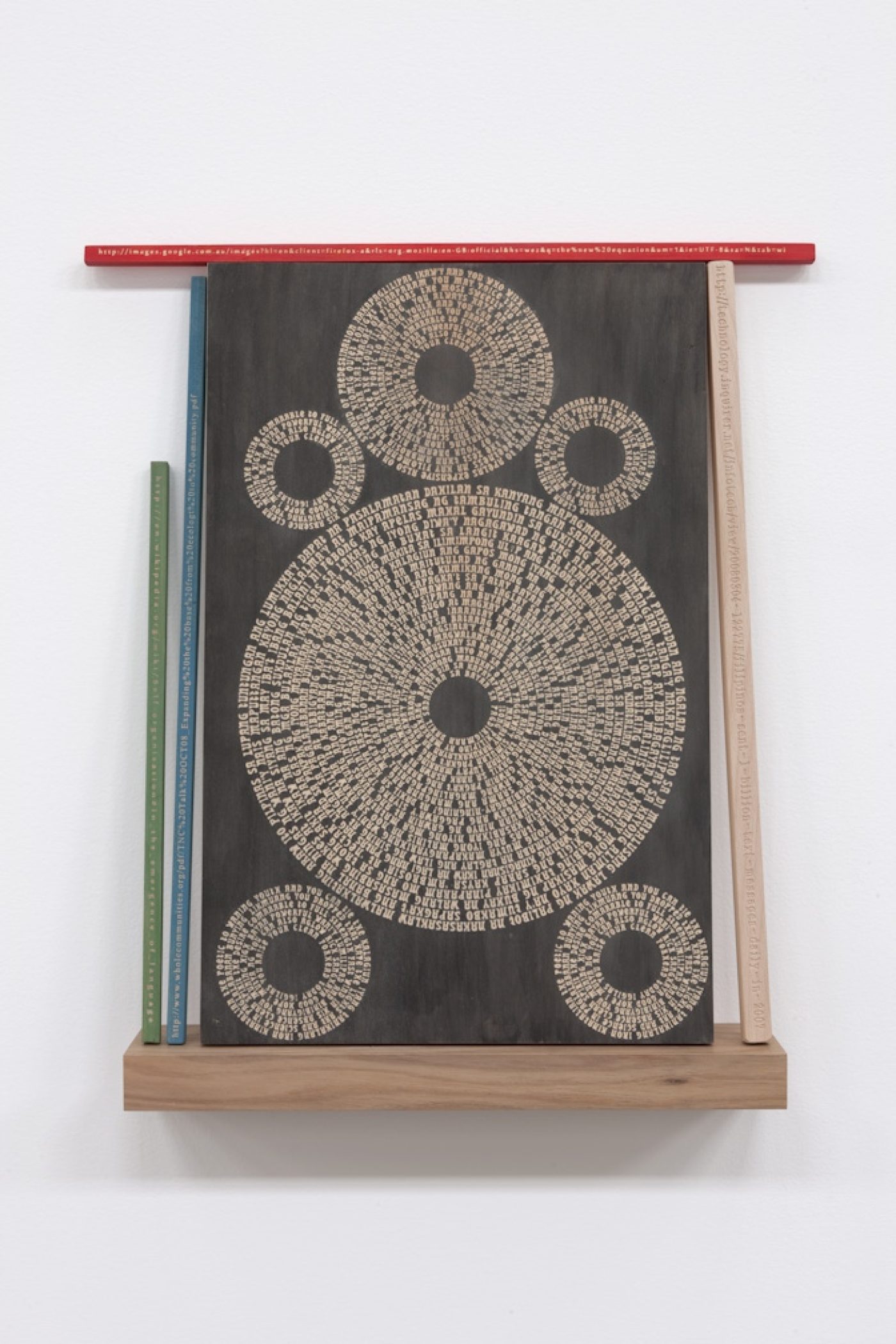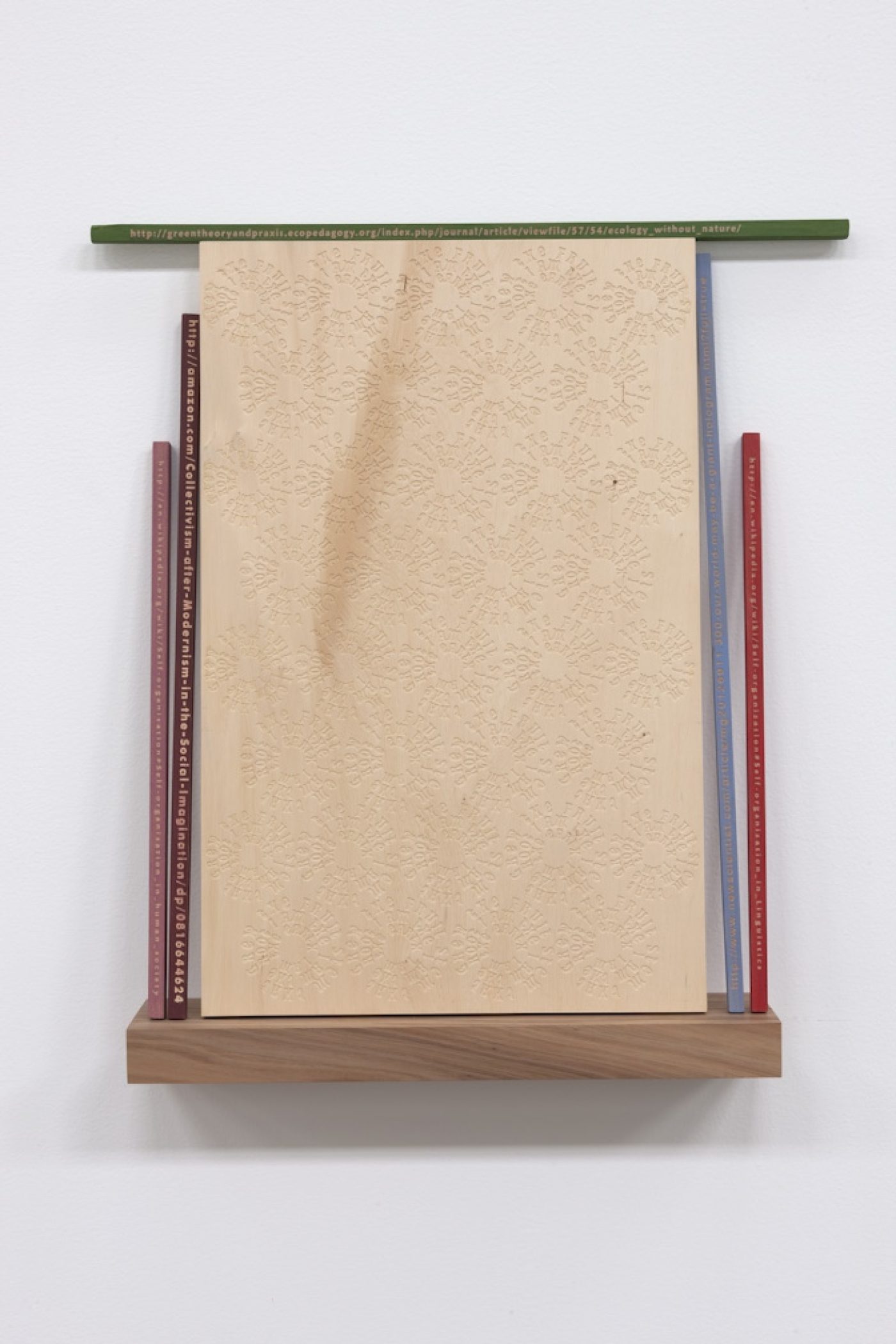Emily Floyd
The Fertile Void
14th August – 26th September 2009
Anna Schwartz Gallery Carriageworks
There is a fine art to explaining complex problems in simple terms. It is a strategy employed by leading politicians, theorists, scientists, philosophers and artists, and is thought to have the potential for great affect.
Emily Floyd’s practice has been committed to this strategy, through the use of kindergarten art as a vehicle for spelling out complicated ideologies. This methodology is extended and continues with Floyd’s new exhibition, at Anna Schwartz Gallery Sydney.
‘The Fertile Void’ takes a critical view of the social practices of the generation of Australians that is Floyd’s. This bohemian bourgeoisie is generally perceived as culturally, environmentally and socially aware, although for Floyd, awareness and actions are misguided. For Floyd, there is a certain insincerity manifest in gestures that lack authenticity. For example, the microcosms of the community garden, the farmers market and the alternative school are fantasies created to deal with the prospect of food shortages, environmental collapse and state control.
‘The Fertile Void’ is divided into three separate installations: Our Community Garden, Alternative School and Farmers Market, representing niche markets related to these cultural gestures.
The Internet is both a point of departure for the project, as well as a metaphor for the ideals of utopian society. In Our Community Garden Floyd makes connections between community gardens and creative commons, “literally transposing URLs onto the sculptural forms” creating a site for information exchange. However rather than presenting us with a fixed idea, Floyd offers possible connections, and leaves us wandering through the garden, physically and intellectually.
The strategy is continued in the Child and Adult Sculptures that comprise the Alternative School. Here, abacus-like sculptures depict various texts sourced from the Internet, such as an Australian permaculture manual, and a free on-line translation (between English and Filipino) of the leftist poetry of Judith Wright. Islamic patterning, which is drawn from geometry and nature, is employed, giving the sculptures both a formal and organic aesthetic, while at the same time referencing the language of a Steiner or Montessori kindergarten.
By incorporating the organic Farmers Market into the gallery, Floyd collapses two markets into one. The organic food and contemporary art markets each provide the formula for a response to popular dissatisfaction, and so when they are conflated, this becomes the ultimate niche market of late capitalism.
The isolated Garden Sculpture, suspended from above, recalls wind chimes and wooden garden decorations associated with the hippie movement. At the same time, the un-ending form of the double helix is a visual representation of infinite space. Here the URLs are obscured, incomplete, like information lost on the Internet through broken links.
The physical navigation necessary to experience ‘The Fertile Void’ could be compared to the spatial experience of the Internet. In this sense Floyd employs a strategy that can be easily navigated by an audience already adept at receiving and interpreting information in this way. As subjects of the digital age of information, we are used to navigating our way through a sea of information, to extract small fragments, which we piece together to form a story.
Tania Doropoulos, 2009
Images
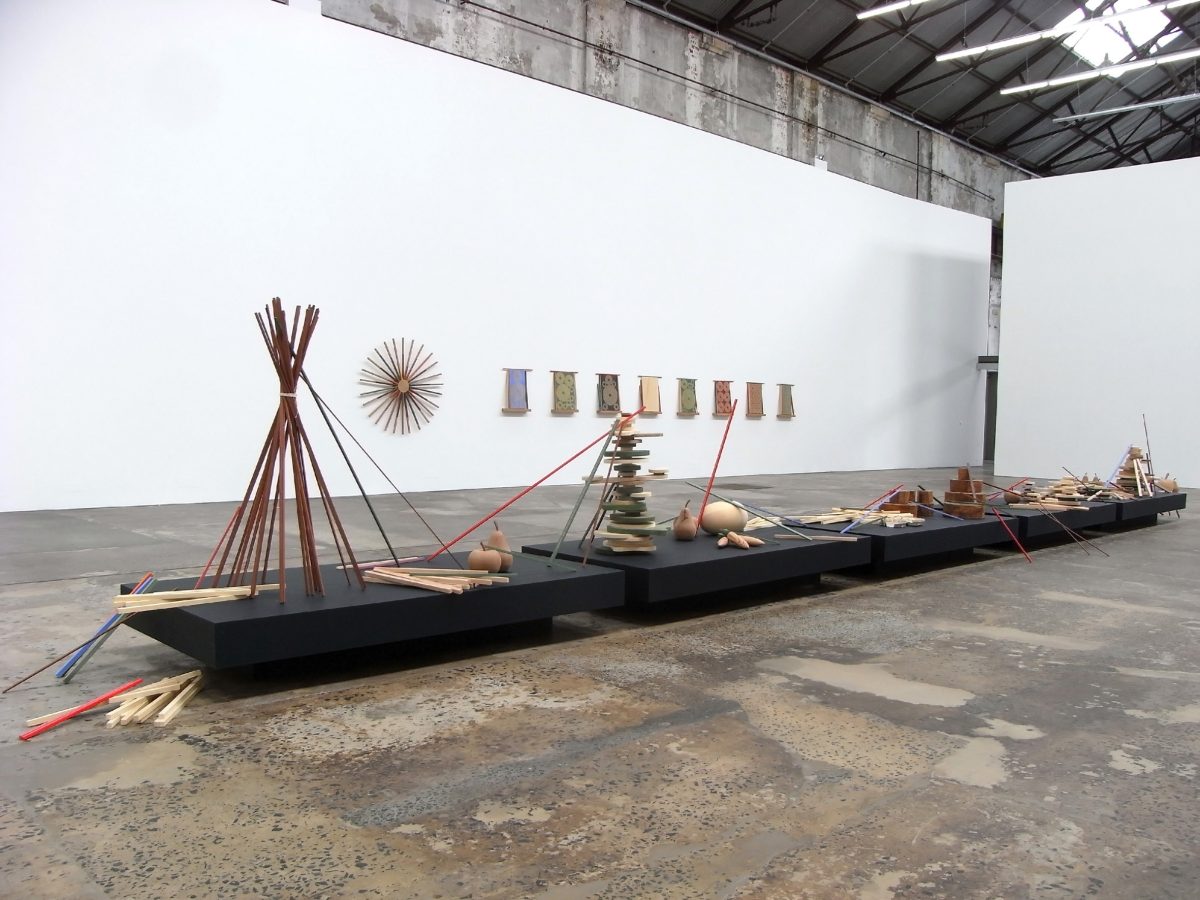
Emily Floyd
The Fertile Void, 2009
installation view, Anna Schwartz Gallery, Carriageworks
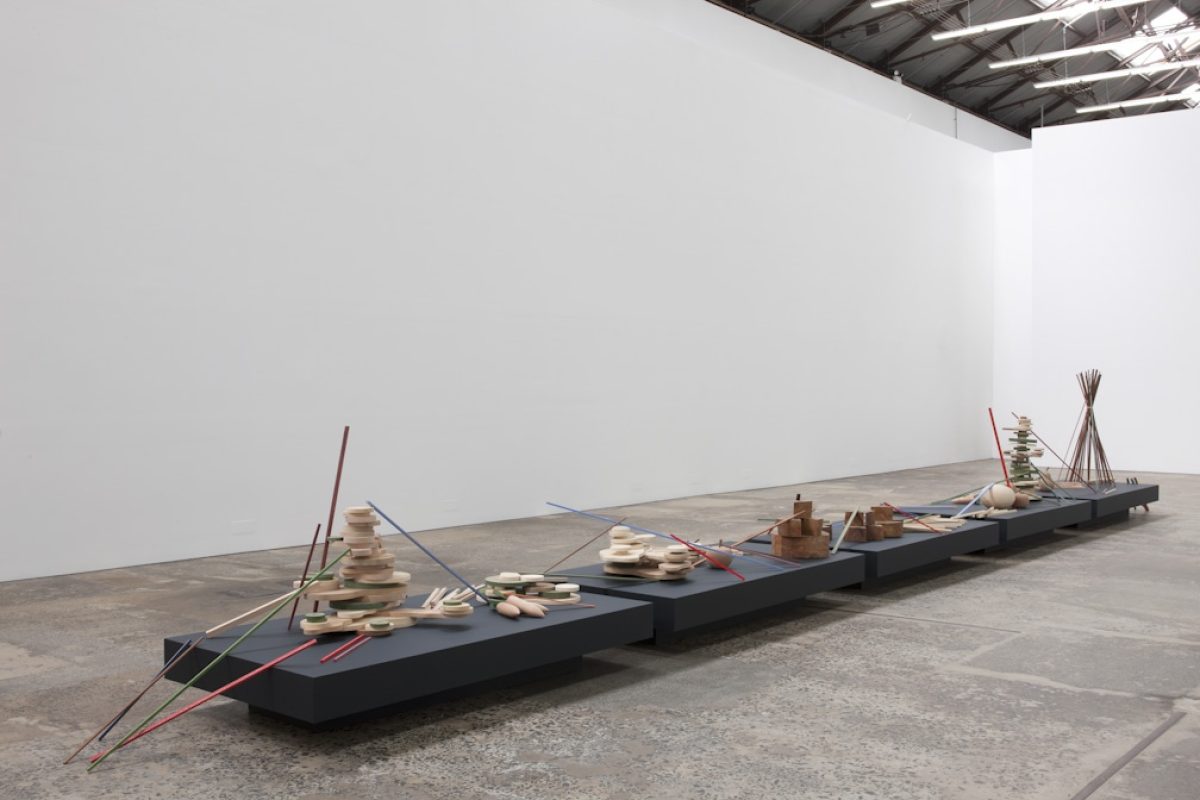
Emily Floyd
Our Community Garden, 2009
Installation consisting of five black plinths with sculptural elements; fluid acrylic paint and beeswax on wood (Huon Pine, Kauri, Sugar Pine, Blue Gum, Beechwood, Cherry Wood), hemp rope
Dimensions variable

Emily Floyd
Garden Sculpture, 2009
150 elements threaded on rope; Beechwood and hemp rope
420 x 61 x 61 cm
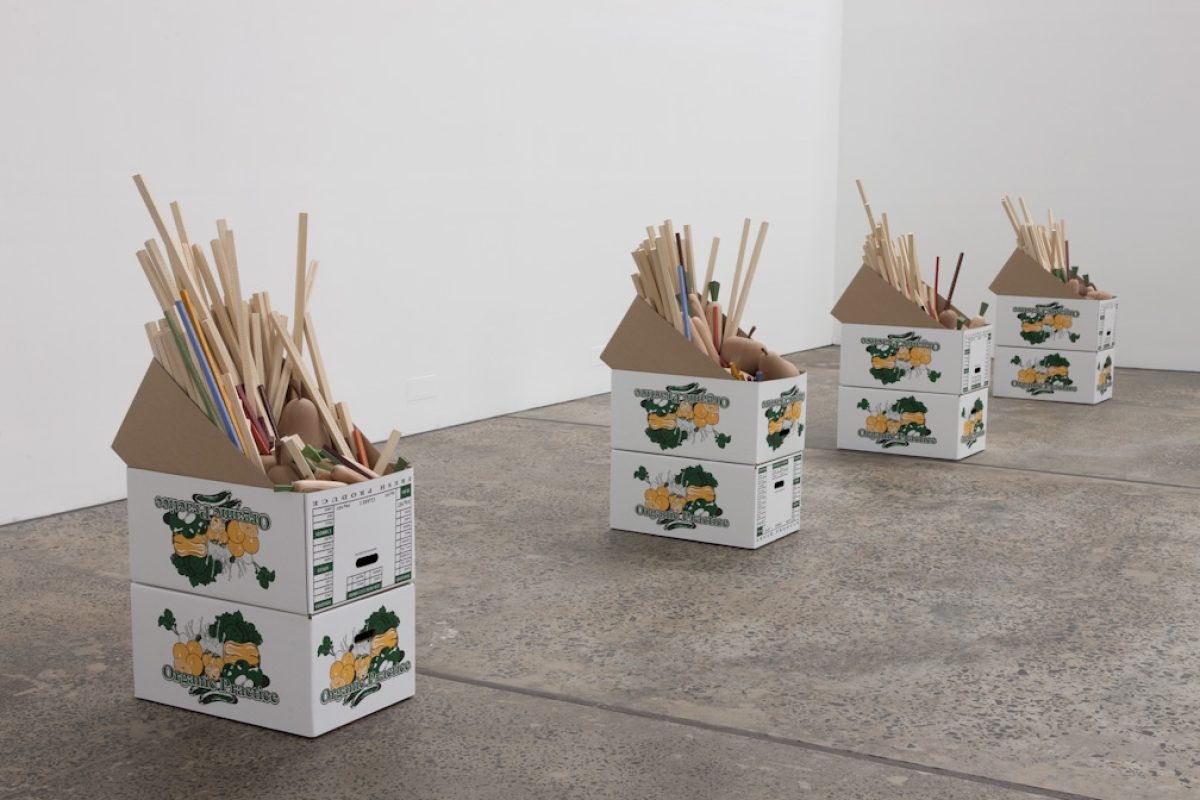
Emily Floyd
Organic Practice, 2009
Wooden sculptures (Kota Wood, Huon Pine, Beechwood, Ancient New Zealand Kauri), cardboard presentation box
60 x 61 x 40 cm each

Emily Floyd
Sun and Star Sculpture, 2009
Fluid acrylic and beeswax on Huon Pine and Cherry Wood
110 x 110 x 10 cm

Emily Floyd
Child and Adult Sculpture [1], 2009
Fluid acrylic paint and beeswax on Huon Pine and Kauri Wood, on solid Blackwood shelf
66 x 50 x 10 cm
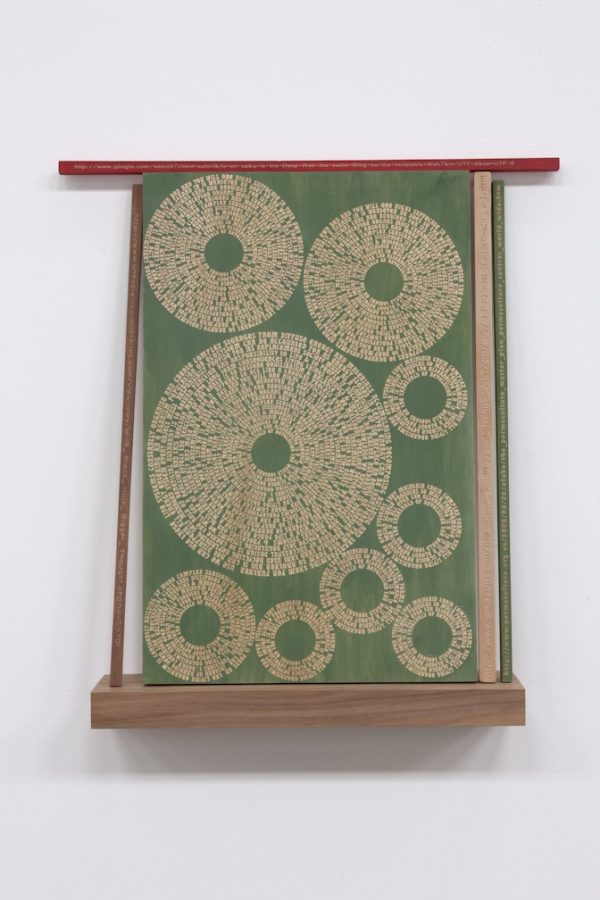
Emily Floyd
Child and Adult Sculpture [2], 2009
Fluid acrylic paint and beeswax on Huon Pine and Kauri Wood, on solid Blackwood shelf
66 x 10 x 50 cm

Emily Floyd
Child and Adult Sculpture [3], 2009
Fluid acrylic paint and beeswax on Huon Pine and Kauri Wood, on solid Blackwood shelf
66 x 50 x 10 cm

Emily Floyd
Child and Adult Sculpture [4], 2009
Fluid acrylic paint and beeswax on Huon Pine and Kauri Wood, on solid Blackwood shelf
66 x 50 x 10 cm

Emily Floyd
Child and Adult Sculpture [5], 2009
Fluid acrylic paint and beeswax on Huon Pine and Kauri Wood, on solid Blackwood shelf
66 x 10 x 50 cm

Emily Floyd
Child and Adult Sculpture [6], 2009
Synthetic polymer paint and beeswax on Huon Pine and Kauri Wood, solid Blackwood shelf
66 x 50 x 10 cm

Emily Floyd
Child and Adult Sculpture [7], 2009
Synthetic polymer paint and beeswax on Huon Pine and Kauri Wood, solid Blackwood shelf
66 x 50 x 10 cm
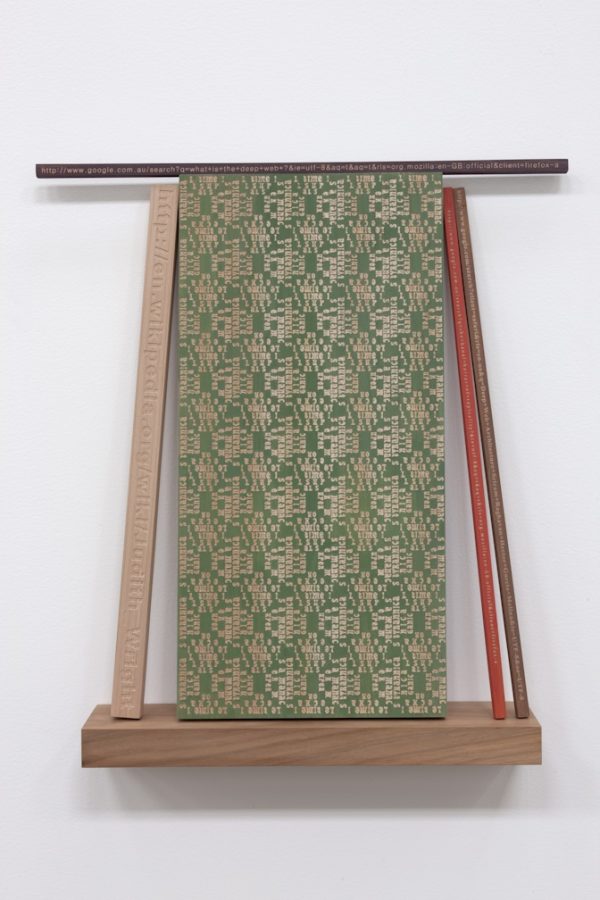
Emily Floyd
Child and Adult Sculpture [8], 2009
Fluid acrylic paint and beeswax on Huon Pine and Kauri Wood, on solid Blackwood shelf
66 x 50 x 10 cm





